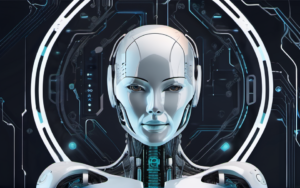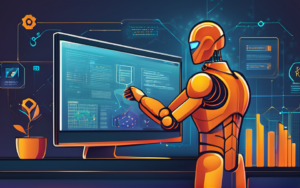The world of technology has seen a dramatic shift over the past few decades, with advancements in computing, communication, and connectivity changing the way we live, work, and interact. This evolution has also significantly impacted the landscape of cybersecurity evolution, a field that has evolved alongside technology to protect sensitive data and systems from ever-growing cyber threats. From the early days of dial-up internet to the cloud-based world of today, cybersecurity has undergone a remarkable transformation. Let’s delve into the fascinating history of cybersecurity evolution, examining its key milestones, emerging threats, and future trends.
The Dawn of Cybersecurity: A Look Back at the Early Days
The early days of computing were marked by a simpler approach to security. While rudimentary security measures existed, the concept of cybersecurity as we know it today was still in its infancy.
The Rise of Dial-Up and the First Cyber Threats
The introduction of dial-up internet in the 1990s marked a significant turning point. With more people connecting to the internet, the potential for cyberattacks also increased. The first cyber threats were primarily focused on disrupting computer systems and spreading misinformation. Early hackers, often motivated by curiosity, used their skills to exploit vulnerabilities in software and networks.
Early Security Measures: From Passwords to Firewalls
In response to these early threats, basic security measures like passwords and firewalls were introduced. Passwords were used to control access to computers and data, while firewalls acted as barriers to prevent unauthorized access from external networks. These early measures provided a rudimentary level of protection but were far from foolproof against the evolving sophistication of cyberattacks.
The Internet Boom and the Evolution of Cybercrime
The dot-com boom of the late 1990s and early 2000s led to a massive increase in internet usage and a corresponding rise in cybercrime. With the internet becoming an integral part of everyday life, it quickly became a target for malicious actors.
The Rise of Malware and Viruses
The proliferation of personal computers and the internet led to the development of malware and viruses, which quickly spread across networks and caused widespread damage. These malicious programs could steal sensitive data, disrupt computer operations, and even hold systems hostage for ransom.
The Emergence of Organized Cybercrime
As the internet became more sophisticated, organized cybercrime groups emerged, seeking to exploit vulnerabilities for financial gain. These groups developed sophisticated techniques to steal credit card details, personal information, and other valuable data, resulting in substantial financial losses for individuals and businesses alike.
The Importance of Data Security and Privacy
The rise of cybercrime highlighted the importance of data security and privacy. Organizations began implementing more robust security measures, including data encryption, access controls, and security awareness training for employees. The concept of cybersecurity shifted from simply protecting systems to safeguarding sensitive data from unauthorized access, use, or disclosure.
The Mobile Revolution and the Rise of New Threats
The advent of smartphones and tablets in the late 2000s ushered in a new era of mobile computing. While this revolution brought immense convenience and connectivity, it also opened up new avenues for cyberattacks.
The Vulnerability of Mobile Devices
Mobile devices, with their constant connectivity and access to sensitive information, became highly vulnerable to cyber threats. Mobile malware and phishing attacks targeted users, stealing personal data, financial information, and other sensitive details.
The Growth of Social Engineering Attacks
Social engineering attacks, which rely on manipulating human behavior to gain access to sensitive information, also became more prevalent. These attacks often involved phishing emails, fake websites, and social media scams designed to trick users into disclosing personal data or granting access to their devices.
The Importance of Mobile Security Measures
The rise of mobile threats emphasized the importance of mobile security measures. Users were encouraged to download apps from reputable sources, use strong passwords, enable device security features, and be wary of suspicious links and messages. Organizations began developing mobile security solutions to protect their employees’ devices and data.
The Age of Cloud Computing and the Future of Cybersecurity
The rise of cloud computing has fundamentally changed the way businesses store, manage, and access data. While the cloud offers numerous advantages, it also presents unique cybersecurity challenges.
The Challenges of Cloud Security
Cloud security involves protecting data and applications hosted on third-party servers, requiring a collaborative approach between organizations and cloud providers. Challenges include managing access controls, ensuring data encryption, and safeguarding against vulnerabilities in cloud infrastructure.
The Importance of Artificial Intelligence and Machine Learning
Artificial intelligence (AI) and machine learning (ML) are playing an increasingly important role in cybersecurity. These technologies can analyze vast amounts of data to detect anomalies and predict potential threats, helping organizations identify and respond to cyberattacks more effectively.
The Future of Cybersecurity: A Look Ahead
As technology continues to evolve at a rapid pace, the cybersecurity landscape will continue to shift. New threats will emerge, and existing threats will become more sophisticated. Future trends include:
- The growth of the Internet of Things (IoT): The increasing number of connected devices will create new vulnerabilities and attack surfaces, requiring robust IoT security measures.
- The adoption of 5G networks: Faster speeds and lower latency will enhance connectivity but also increase the risk of cyberattacks.
- The rise of quantum computing: Quantum computers have the potential to break current encryption methods, requiring the development of new security protocols.
Cybersecurity will continue to be a crucial aspect of technology in the years to come. By understanding the history of cybersecurity evolution and the challenges of the future, organizations and individuals can better prepare for and mitigate the risks of cyberattacks.
The future of cybersecurity will require a proactive and collaborative approach, with organizations, governments, and individuals working together to build a more secure and resilient digital world. As technology continues to advance, the cybersecurity landscape will undoubtedly evolve, demanding constant innovation and adaptation to stay ahead of emerging threats.




